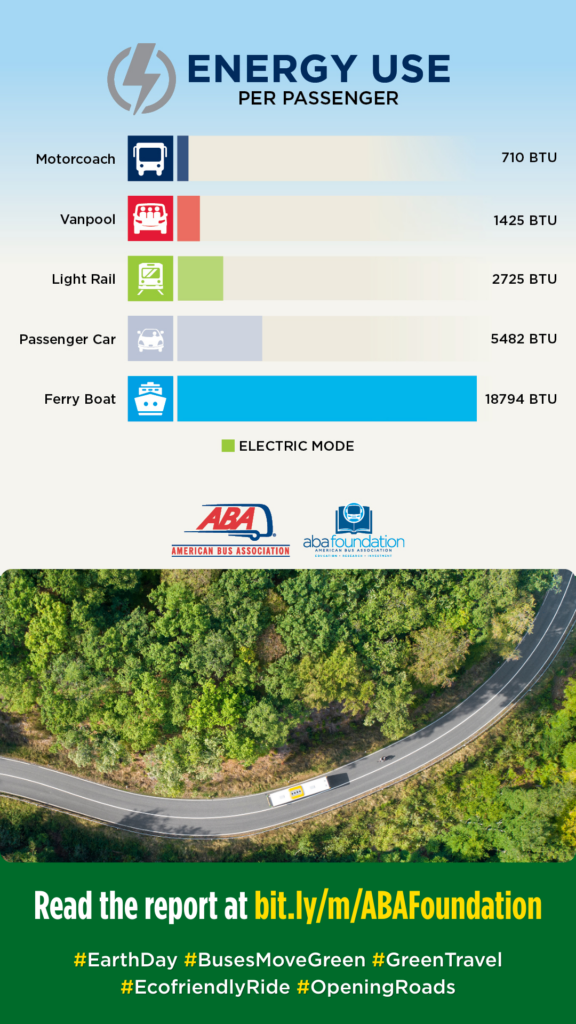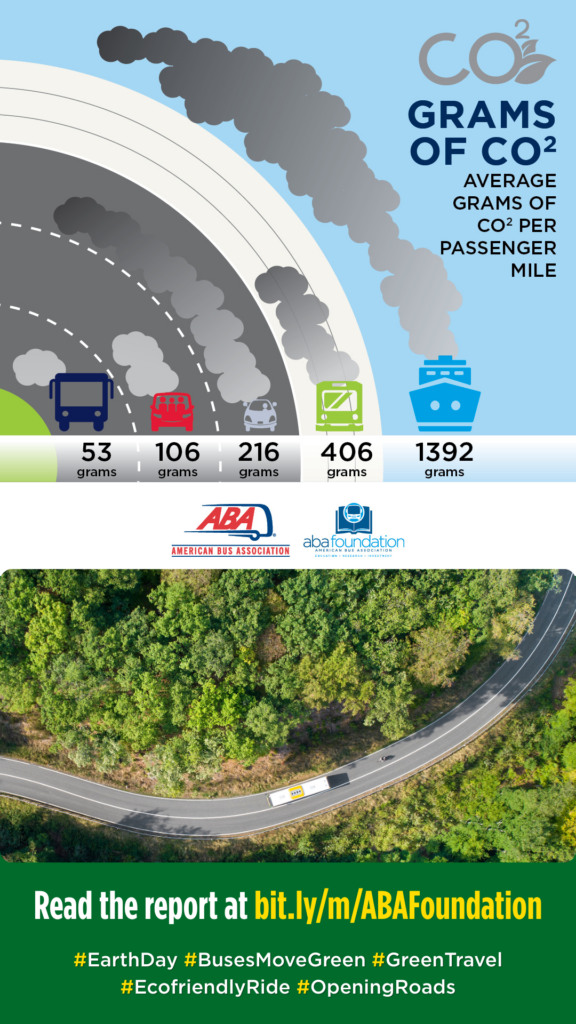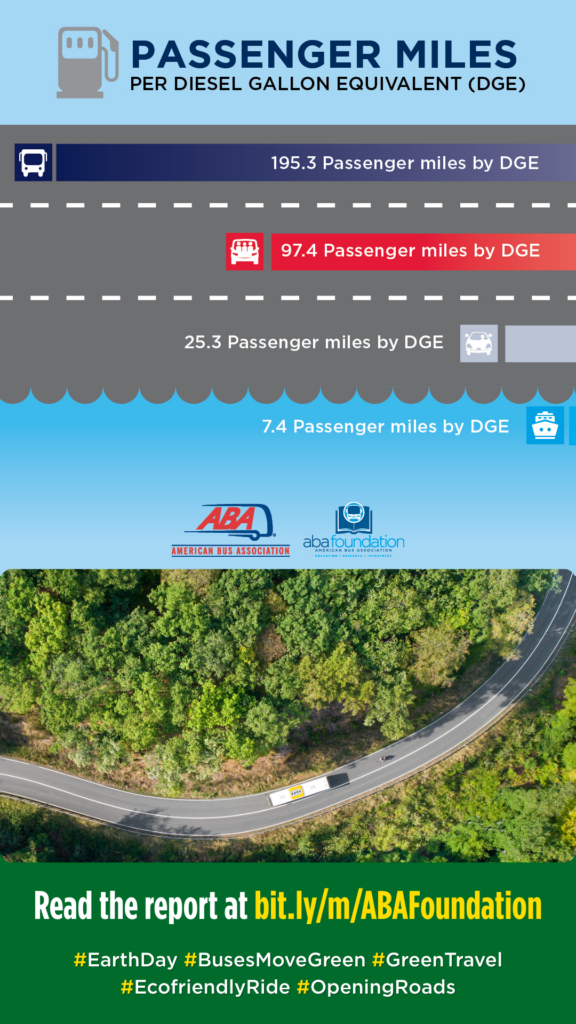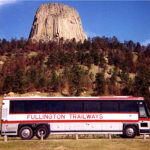Driving Toward a Greener Future with Motorcoach Travel
Research reveals that motorcoach rides are one of the most sustainable ways to travel
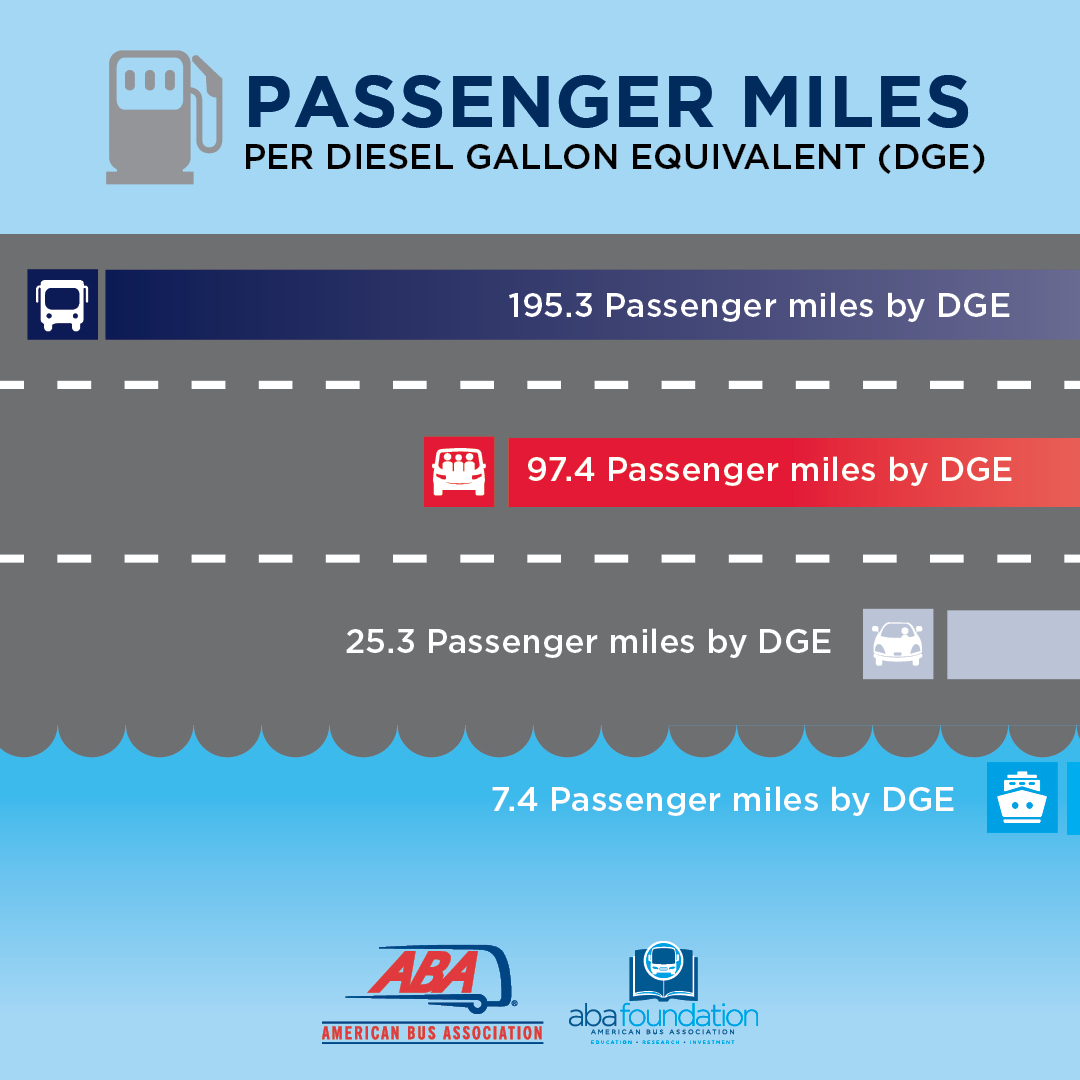
From recycling cans to reducing plastic use, Americans are increasingly embracing eco-friendly habits. This year, the ABA encourages travelers to take their commitment to the environment a step further by choosing motorcoach travel for their summer plans. Motorcoach travel is a greener, more sustainable way for travelers to get to where they are going, helping reduce their carbon footprint while they explore new destinations.
“Motorcoach travel can take up to 30 cars off the road, significantly reducing traffic congestion and carbon emissions,” says ABA CEO and President Fred Ferguson. “If you want to start traveling sustainably, then motorcoaches should be your go-to choice.”
According to research from the ABA Foundation (ABAF) and the Texas A&M Transportation Institute (TTI), motorcoaches are one of the most environmentally friendly transportation options. Building upon ABAF and TTI’s 2019 report, the latest report reveals that motorcoaches produce the least amount of CO2 and use the least energy per passenger mile compared to vanpooling (van-carpooling), passenger cars, light rails, and ferry boats. Motorcoaches also emit fewer pollutants per 1,000 passenger miles in comparison to all other modes of transportation.
Key highlights:
- Passenger cars consume nearly eight times the energy that motorcoaches consume. By analyzing energy use per passenger, the study found that passenger cars use 5482 BTU of energy while motorcoaches use just 710 BTU of energy.
- Looking at pollutants, ferry boats release nineteen times more nitrogen oxides than motorcoaches. Motorcoaches emit an average of 178 grams of nitrogen oxides per one thousand passenger miles. In contrast, ferry boats release a whopping 3,491 grams of nitrogen oxides per one thousand passenger miles.
- Light rail produces nearly eight times more CO2 than motorcoaches do. When calculating grams of CO2 per passenger mile, light rail trains such as Portland MAX Light Rail (TriMet – Oregon) or Buffalo Metro Rail (NFTA – New York) use an average of 406 grams, whereas motorcoaches only produce an average of 53 grams of CO2 per passenger mile.
- On average, motorcoaches cover twice the passenger miles per gallon of diesel fuel compared to vanpooling. The research measured each transportation method’s passenger miles by diesel gallon equivalent (DGE). While vanpooling covered more passenger miles than ferry boats and passenger cars, at 97.4 passenger miles by DGE, motorcoaches achieved 195.3 miles by DGE.
- New motorcoaches are even more sustainable than older models. Experts report that while motorcoach travel has increased in the last five years, vehicle replacements have decreased pollutants by 30 percent, signaling that motorcoach emissions will continue to decrease as new motorcoaches enter the market.
“When someone chooses to travel by motorcoach instead of driving or taking the train, they’re making a small but important choice to protect our planet,” says Lew Myers, ABAF’s Director of Research, Policy, and Impact. “Each additional motorcoach rider is another step towards a greener future.”
Beyond Earth Day, motorcoach travel is a long-term method for consumers to reduce their carbon footprint, lower emissions and make an impact. Let’s continue to make eco-friendly choices, one trip at a time.
[Share this article in celebration of Earth Day on April 22.]
